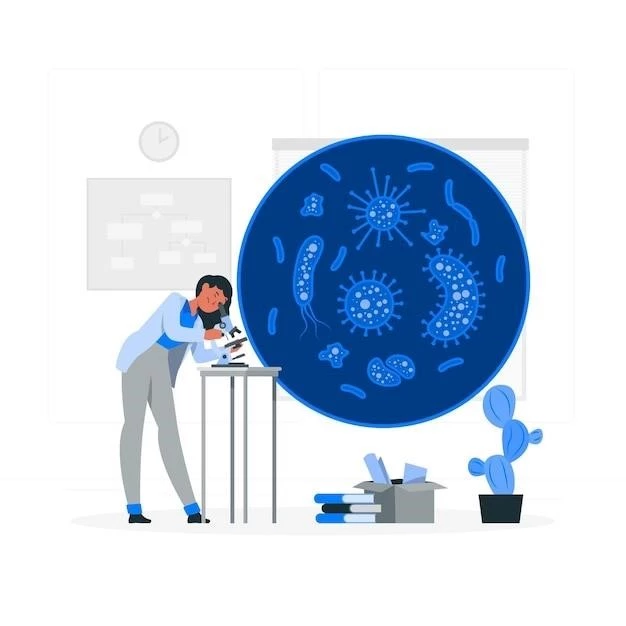Herpesvirus Simiae B Virus
This article provides a comprehensive overview of the Herpesvirus Simiae B Virus, exploring its transmission, zoonotic nature, neurological manifestations, symptoms, diagnosis, treatment options, prevention strategies including vaccination, and the public health implications of this infection.
Introduction to Herpesvirus Simiae B Virus
Herpesvirus Simiae B Virus, also known as Macacine herpesvirus 1 or B virus٫ is a member of the Herpesviridae family that infects macaque monkeys. While typically asymptomatic in monkeys٫ B virus can cause severe neurological complications in humans٫ such as encephalitis.
First identified in 1932٫ B virus has a zoonotic potential٫ primarily transmitted to humans through direct contact with infected macaques٫ their bodily fluids٫ or tissues. Due to its similarities to the Herpes Simplex Virus٫ human infections with B virus can result in severe illness٫ making it a significant public health concern.
Transmission of Herpesvirus Simiae B Virus
The transmission of Herpesvirus Simiae B Virus occurs primarily through direct contact with infected macaques or their bodily fluids. This zoonotic virus can be transmitted to humans through scratches, bites, mucosal exposure, or contact with contaminated materials.
Occupational exposure among individuals working with macaques in research facilities, zoos, or biomedical settings poses a significant risk of B virus transmission. Additionally, consuming contaminated food or water from sources contaminated with macaque secretions can also lead to infection.
While the virus is not easily transmissible between humans, rare cases of human-to-human transmission have been documented, particularly through organ transplantation or exposure to the saliva or central nervous system tissues of infected individuals.
Zoonotic Nature of Infection
The Herpesvirus Simiae B Virus exhibits a zoonotic nature, meaning it can be transmitted from non-human primates to humans. In the case of B virus, the natural hosts are macaque monkeys, particularly rhesus macaques and cynomolgus monkeys.
Human infections with B virus typically occur through direct contact with infected macaques or their body fluids. This zoonotic transmission can lead to severe and potentially fatal outcomes in humans, highlighting the importance of understanding and mitigating the risks associated with interactions between humans and macaques.
Given the potentially devastating consequences of B virus infection in humans, particularly in cases of neurological involvement, it is essential to prioritize measures that prevent zoonotic transmission, protect individuals at high risk of exposure, and enhance awareness about the risks posed by this pathogen.
Neurological Manifestations of Herpesvirus Simiae B Virus
Herpesvirus Simiae B Virus is known for its potential to cause severe neurological complications in infected individuals. In humans, B virus can lead to a condition known as B virus encephalitis, characterized by inflammation of the brain.
Neurological manifestations of B virus infection may include symptoms such as headache, fever, confusion, seizures, and focal neurological deficits. Without prompt diagnosis and appropriate treatment, B virus encephalitis can progress rapidly, resulting in serious and sometimes fatal outcomes.
The neurological impact of B virus underscores the critical need for healthcare providers to consider B virus infection in individuals with a history of exposure to macaque monkeys and relevant clinical symptoms. Early recognition and intervention are essential in managing the neurological complications associated with B virus infection.
Symptoms and Diagnosis
The symptoms of Herpesvirus Simiae B Virus infection can vary depending on the severity of the disease. Initial symptoms may include fever, malaise, headache, and muscle aches. As the infection progresses, individuals may develop neurological symptoms such as confusion, agitation, and in severe cases, seizures.
Diagnosing B virus infection typically involves a combination of clinical evaluation, laboratory testing, and possibly imaging studies to assess the extent of neurological involvement. Laboratory tests, including polymerase chain reaction (PCR) assays and serological testing, can help confirm the presence of B virus in the body.
Given the potentially severe outcomes associated with B virus infection, prompt and accurate diagnosis is crucial. Healthcare providers should maintain a high index of suspicion in individuals with a history of macaque monkey exposure and compatible symptoms, ensuring timely intervention and appropriate management of the infection.
Treatment Options for Herpesvirus Simiae B Virus
Managing Herpesvirus Simiae B Virus infection involves a multifaceted approach aimed at addressing both the viral infection and its neurological manifestations. Antiviral medications, such as acyclovir and ganciclovir, may be administered to help suppress viral replication and reduce the severity of symptoms.
In cases of B virus encephalitis, which can have serious neurological consequences, supportive care is essential to address symptoms such as seizures, altered mental status, and other neurological deficits. Intensive monitoring, including neurological assessments and close observation, is crucial in managing the complications of B virus infection.
Collaboration between infectious disease specialists, neurologists, and critical care teams is often necessary to provide comprehensive care to individuals with B virus infection. Treatment strategies may vary based on the severity of the disease and the individual’s overall health status, highlighting the importance of individualized care in managing this challenging infection.
Prevention Strategies and Vaccination
Preventing Herpesvirus Simiae B Virus infection primarily involves implementing strict safety protocols and preventive measures in settings where individuals may come into contact with macaque monkeys. This includes using personal protective equipment, practicing proper hand hygiene, and implementing measures to minimize the risk of animal bites or scratches.
Occupational health and safety guidelines recommend specific protocols for individuals working with macaques, emphasizing the importance of training, risk assessment, and appropriate handling techniques to prevent B virus transmission. Regular monitoring of high-risk individuals for potential exposure and prompt evaluation of any suspicious symptoms are also key components of prevention strategies.
While no specific vaccine is currently available for B virus, ongoing research aims to develop preventive vaccines that can protect individuals at risk of exposure. Until a vaccine becomes widely available, strict adherence to safety measures and proactive surveillance are crucial in minimizing the risk of Herpesvirus Simiae B Virus infection.

Public Health Implications
The presence of Herpesvirus Simiae B Virus poses significant public health implications due to its potential for zoonotic transmission and severe neurological consequences in infected individuals; Public health efforts focus on raising awareness about the risks associated with exposure to macaque monkeys and the importance of preventive measures.
Surveillance programs play a critical role in monitoring B virus infections, identifying potential outbreaks, and implementing timely interventions to prevent further transmission. Collaboration between public health authorities, healthcare providers, and research institutions is essential in developing comprehensive strategies to mitigate the impact of B virus on public health.
Educational initiatives targeting at-risk populations, such as laboratory workers, zookeepers, and researchers, aim to enhance knowledge about B virus transmission, symptoms, and preventive measures. By promoting a culture of safety, early detection, and appropriate response, public health efforts strive to reduce the burden of Herpesvirus Simiae B Virus infection and protect the health of both workers and the general population.
Conclusion
In conclusion, Herpesvirus Simiae B Virus, with its zoonotic potential and neurological manifestations, presents a significant public health concern. The importance of understanding the transmission routes, recognizing the symptoms, and implementing preventive measures cannot be overstated in the management of B virus infections.
Effective prevention strategies, including stringent safety protocols, training for at-risk individuals, and heightened awareness, are crucial in reducing the risk of B virus transmission. While treatment options focus on addressing the viral infection and its neurological complications, early diagnosis and intervention remain paramount in improving clinical outcomes.
As ongoing research continues to explore vaccination strategies and innovative therapies, a comprehensive approach involving public health initiatives, collaborative efforts, and individual responsibility is essential in combating the challenges posed by Herpesvirus Simiae B Virus. By prioritizing prevention, early detection, and coordinated responses, we can work towards minimizing the impact of B virus infections and safeguarding public health.
